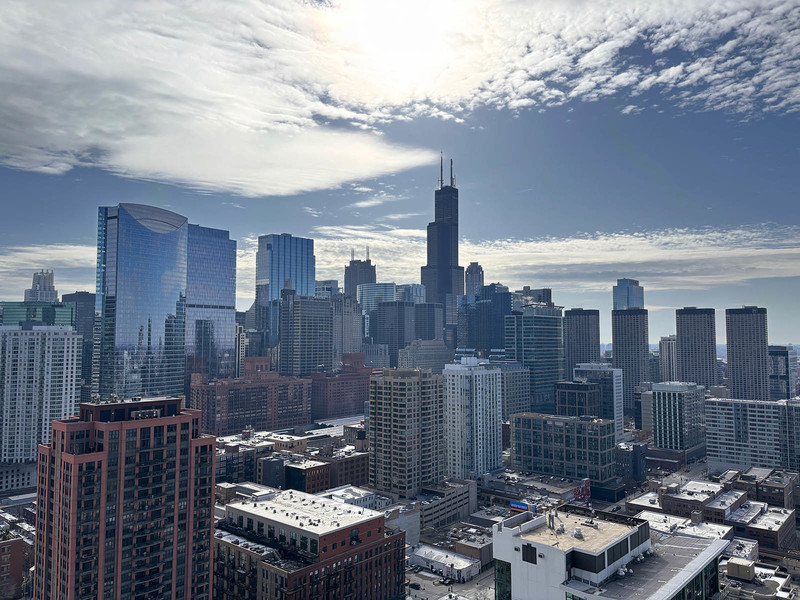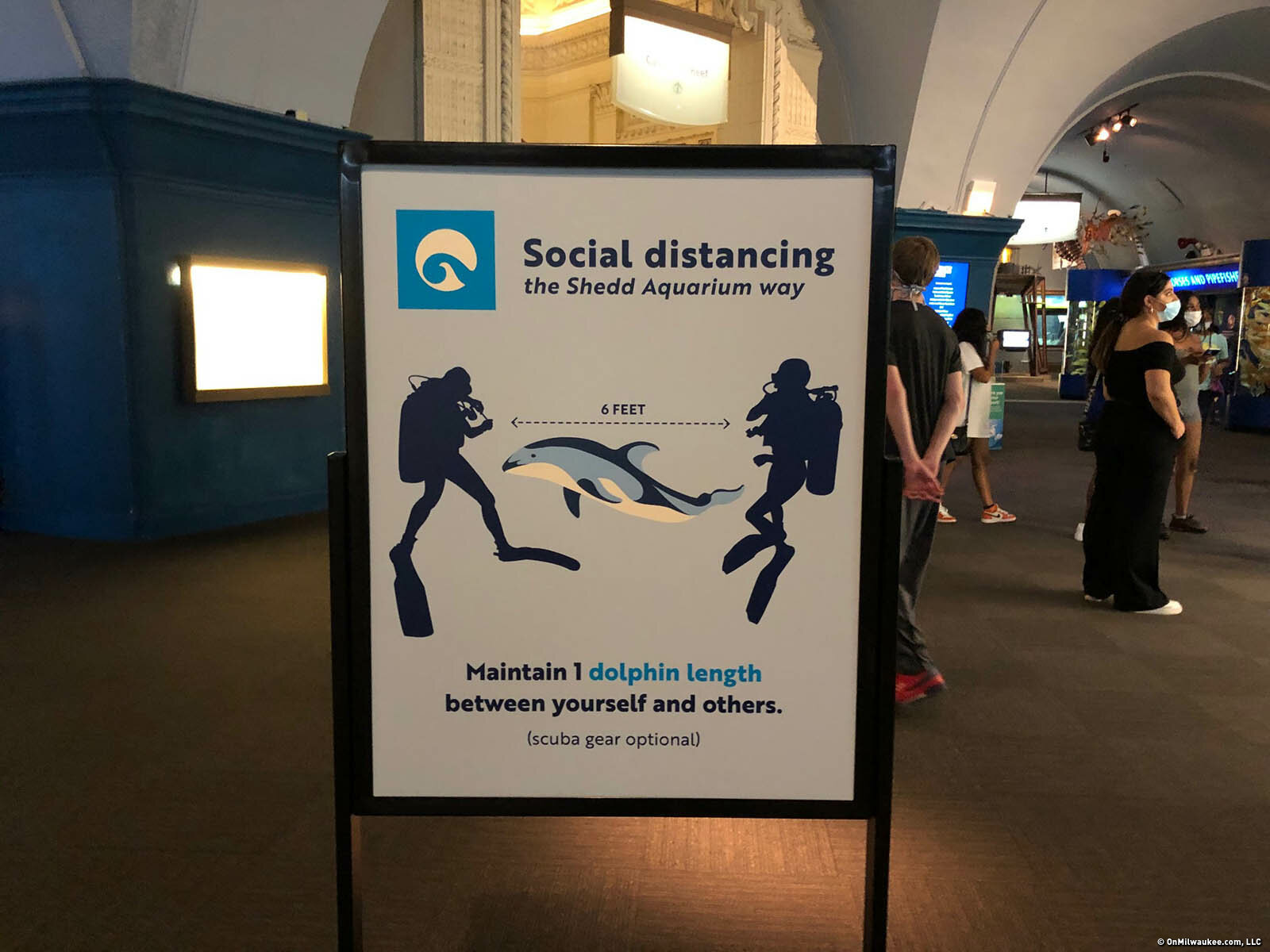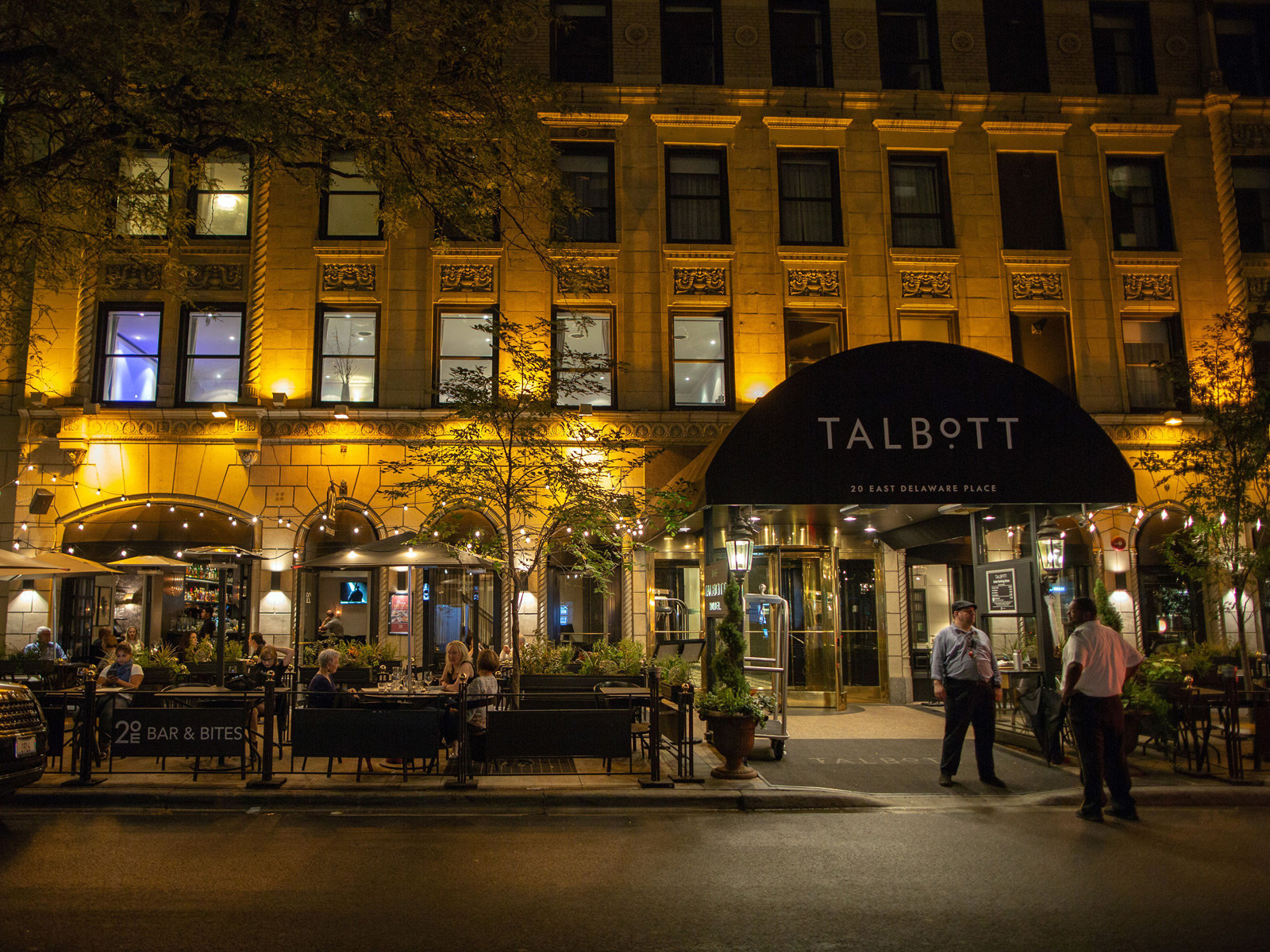CHICAGO – If the numbers are any indication – and surely they are – Brew City loves Historic Milwaukee Inc.’s annual Doors Open event. If that September extravaganza of hometown exploration really has you aching for more – as it does for me – you’ll rejoice that Open House Chicago always follows in October.
Organized by the Chicago Architecture Center, the free Open House Chicago – like Doors Open MKE – offers access to interesting places of all kinds, but, of course, in the Windy City.
This year’s event takes place Saturday and Sunday, Oct. 19 and 20 and includes more than 170 sites in more than 20 Chicago neighborhoods, including 25 new sites.
One of those new sites has long been on my bucket list...
I’m talking about the 1911 retail building at 2120 S. Michigan Ave., which for a decade was home to Chess Records’ office and studio.
Chess was founded by Polish immigrant brothers Leonard and Phil Chess, who bought out the Aristocrat label in 1947 and renamed it for their Americanized surname in 1950. They moved into the Michigan Avenue building in 1957 and it is here that Willie Dixon oversaw sessions by the likes of Chuck Berry, Muddy Waters, Bo Diddley, Etta James, Koko Taylor, Little Milton, Little Walter, Howlin’ Wolf, Sonny Boy Williamson and many other blues stalwarts.
“This is the only place in the world designed and built to record the blues,” says Janine Judge, who is executive director of Willie Dixon’s Blues Heaven Foundation, which owns the building,
While much has changed in the two-story building since Chess left for a nearby site – now converted to residences called the Chess Lofts – the vibe remains, as do some key spots.
The Chess era front door is still there – “think of all the hands that opened that door and the doors that opened for those hands here,” quips Judge – as is the waiting room and the offices occupied by the Chess brothers.
The studio is still upstairs, as is the old studio B, which also served as a rehearsal room, where Dixon made Berry practice “Johnny B. Goode” 40 times before letting him record it across the hall, and where a jam session led to the writing of “Rescue Me,” which was a huge hit for Fontella Bass in 1965.
The Rolling Stones also recorded here on three occasions in 1964 and ‘65 and named an instrumental tracked here “2120 South.Michigan Avenue.”
The front windows are not original, Judge points out, because Little Walter – angry with Leonard Chess – drove his car through the previous ones.
We see the reception area where Minnie Ripperton served for many years as the first face seen by anyone who was buzzed in, working as a receptionist (as well as a recording artist) at Chess before she scored a massive hit with “Loving You” (and becoming comedian Maya Rudolph’s mother).
The walls are covered in memorabilia, including guitars, original vinyl, clothing and album covers – including erstwhile Milwaukeean Baby Face Willette’s “Behind the 8 Ball” – and a number of spaces have vetrines with even more memorabilia.
The studio itself is the real gem, with its slanted south wall and tiled control room window (both early innovations in audio recording made here at Chess), vintage instruments and nearly floor-to-ceiling photograph of Dixon with Waters and Buddy Guy at work in this very room.
In the center is a vintage mic that more or less marks the spot where Etta James sang the immortal “At Last” in 1960.
But, as Judge plays a selection of songs recorded here, it’s easy to close your eyes and imagine the blues legends, the proto rock ‘n’ rollers and more that performed in here for posterity, including jazzmen like Ahmad Jamal, Kenny Burrell, Ramsey Lewis (“The In Crowd”!), Milt Buckner and Willette, gospel acts like Aretha Franklin and The Soul Stirrers, plus doo-wop acts like the pre-Motown Four Tops, comedians like Moms Mabley and others.
Although the museum is open for free for Open House, please consider making a donation.
Another site that’s sort of making its OHC debut is the Murphy Auditorium at the Driehaus Museum, 50 E. Erie St. Although the space was open for visits during OHC in 2022, it was before the restoration of the building, constructed between 1923 and ‘26, which reopened this past spring.
During the period when the American College of Surgeons owned and occupied the adjacent Nickerson Mansion – now home to the Driehaus Museum – the association desired a larger space for events, lectures and meetings.
Thus, they hired the popular hometown architects Benjamin Marshall and Charles Fox (who also designed The Blackstone and The Drake hotels, and Milwaukee’s Northwestern Mutual building).
Basing their work on Paris’ Chapelle Notre-Dame de Consolation, they created a church-like 32,193-square-foot Classical Revival building that took nearly three years to complete, from 1923 until ‘26, on the site of the mansions port cochere, carriage house and gardens.
There are bronze Tiffany entrance doors between the towering columns and a Tennessee marble staircase in the lobby leads up to the balcony.
Inside the gorgeous interior is plaster ornamentation by Zander, Reum & Co, a soaring stained glass windows by Ann Lee Willet of Willet Stained Glass & Decorating Co., a vintage Estey organ and acoustics perfect for unamplified music.
Along the “altar” are 15 gothic “thrones” that were reserved for the ACS’ president and Board of Regents.
It is truly a church-like space, though it was never a temple to anything but education and science. And, no, the Driehaus team assures us, surgeries were never performed in this building.
Though Richard H. Driehaus bought the Nickerson Mansion and opened the museum in 2003 and ‘08, respectively, the ACS continued to own the auditorium until just a couple years ago.
“The sale went through after Richard Driehaus had died (in 2021),” says Julie Treumann, the museum’s director of marketing and communications, “but it had always been his dream to unite these two buildings. He was instrumental in getting the first renovation of this building done (many years ago).
This latest renovation brought the auditorium space back to its original beauty but added updated lighting and made the main floor seating area more accessible. Upstairs in the six-story building, former office space was converted into a Learning Center with new staff offices, seminar space, an 800-square-foot-terrace and art and maker studios.
“We are so happy (Richard Driehaus’) vision has come to fruition and now this expansion allows us to extend our work outward in the larger community,” says museum Executive Director Lisa Key.
“It is thrilling for us to complete this important renovation creating a new museum campus, offering visitors not only an incredible museum of art, architecture, and design, but now a newly rejuvenated auditorium that will add a vital and dynamic public space to the cultural campus in Chicago that will continue to increase the historical profile of this great city of architecture.”
The building was designated a Chicago landmark earlier this year.
“It was a huge relief to learn about the Driehaus Museum expanding its campus into the adjacent Murphy Memorial,” Tim Samuelson, the cultural historian emeritus of the City of Chicago, said in June. There are not many options for finding an appropriate re-use that would respect the historic character of such a monumentally scaled historic building while at same time providing a positive impact on the surrounding neighborhood.
“The Driehaus Museum has been a thoughtful community partner and valuable neighborhood asset for the past 20 years, and its expansion into the Murphy makes something great even greater!”
Earlier this summer, I finally made it to the Henry Hobson Richardson’s landmark Glessner House on Prairie Avenue, a street lined with beautiful historic homes. It, too, is open during Open House and you should add it to your list. But before you go, read my story about it here.
Another really interesting stop is the McCormick Bridgehouse & Chicago River Museum on Michigan and Wacker. You can read more about that one and some other recommended stops from previous years in this article and this one.
Find a complete list of sites here.
There’s also an app you can use to navigate the many sites.
If you’re going to make a weekend of it, consider these hotels with some architectural interest ...
The Swissotel on Wacker Drive is about a block from the Chicago Architectural Center with its exhibition space – currently hosting a look at Chicago’s Loop – and architecture-themed gift shop. It also offers great views of some incredible nearby architecture, notably the St. Regis and Aqua Tower, both designed by hometown architect Jeanne Gang.
The hotel also occupies a building designed by renowned Chicago architect Harry Weese, who also left his mark on Downtown Milwaukee in the form of the Performing Arts Center (renovated into the Marcus Performing Arts Center), the IBM Building at 611 E. Wisconsin Ave. and the 411 E. Wisconsin office building.
In addition to standard rooms, most of which overlook the a combination of the Chicago River, Lake Michigan and the city skyline, there are some themed suites that offer something a little different.
A “Kid Suite” offers a lot of space for a family and a special dedicated room for little ones, furnished with kid-sized table and chairs, coloring books and stuffed animals. A 41st-floor holiday “Santa Suite” will return for the 11th year, too.
The “Vitality Suite” is a fitness-lover’s paradise. The 1,700-square-foot, multi-room suite includes a personal gym space with a Peloton bike, rowing machine, balance balls, yoga mat and more.
While you don’t even need to leave the room to get your workout in, you’ll want to head up to the 43rd floor fitness center where the free weights, weight machines, treadmills and other cardio machines have a breathtaking view of the city.
In the lobby is the casual and friendly Amuse, with breakfast in the mornings and a lunch and dinner menu to complement the cocktails, beer and wine.
The smashburgers are not to be missed, neither is the fried calamari, but be warned that the latter is served with a healthy dose of piccante peppers!
The Sofitel in River North will also wow architecture buffs as one of the few buildings in the U.S. designed by award-winning French architect Jean-Paul Viguier.
Opened in May 2002, the building is striking thanks to the sharp vertical blade-edge facade that landed it on the American Institute of Architects’ Favorite Architecture list.
The place has a French vibe; a staffer greeted me with a “bonjour” when I arrived and the guests at the next table when I dined at Le Bar in the lobby spoke in French the entire night.
But it’s the comfortable rooms with sleek modern decor – and one of the most comfortable beds anywhere – and the great location on the Gold Coast, right near the desirable River North and Old Town neighborhoods, making it a great base from which to explore Open House Chicago.
In the lobby, the CDA restaurant serves breakfast and lunch and later on it is replaced by Le Bar, which serves a menu of cocktails and delicious bites in a stylish bar atmosphere with a large outdoor patio space, too.
Along with a hearty burger, chicken pita, steak frites and other entrees, Le Bar offers some treats with a French flair, like an Alsace-style bacon and onion flatbread and Nicoise inspired chickpea frites ... and, of course, a macaron plate for dessert.
Perfect for the energy required to hop from site to site at Open House Chicago.
Born in Brooklyn, N.Y., where he lived until he was 17, Bobby received his BA-Mass Communications from UWM in 1989 and has lived in Walker's Point, Bay View, Enderis Park, South Milwaukee and on the East Side.
He has published three non-fiction books in Italy – including one about an event in Milwaukee history, which was published in the U.S. in autumn 2010. Four more books, all about Milwaukee, have been published by The History Press.
With his most recent band, The Yell Leaders, Bobby released four LPs and had a songs featured in episodes of TV's "Party of Five" and "Dawson's Creek," and films in Japan, South America and the U.S. The Yell Leaders were named the best unsigned band in their region by VH-1 as part of its Rock Across America 1998 Tour. Most recently, the band contributed tracks to a UK vinyl/CD tribute to the Redskins and collaborated on a track with Italian novelist Enrico Remmert.
He's produced three installments of the "OMCD" series of local music compilations for OnMilwaukee.com and in 2007 produced a CD of Italian music and poetry.
In 2005, he was awarded the City of Asti's (Italy) Journalism Prize for his work focusing on that area. He has also won awards from the Milwaukee Press Club.
He has be heard on 88Nine Radio Milwaukee talking about his "Urban Spelunking" series of stories, in that station's most popular podcast.







